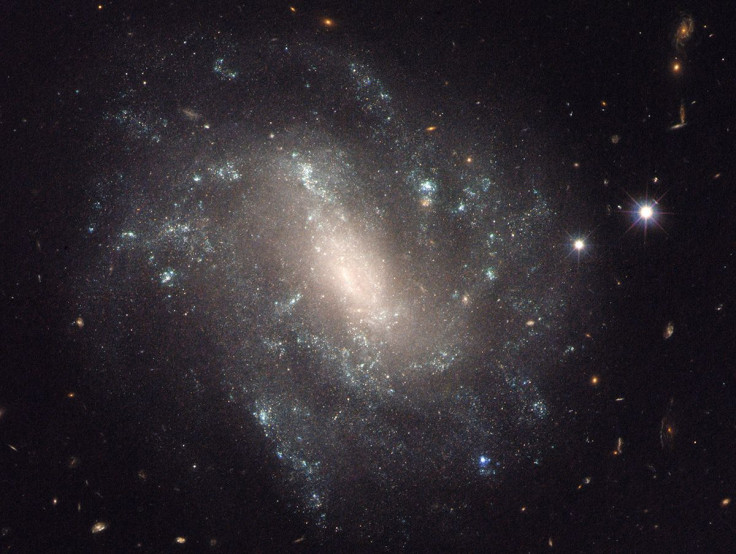The Universe May Be Rushing Headlong Into Oblivion Faster Than We Thought

The universe is mind-bogglingly big, and it’s only getting bigger. Although we still don’t know what’s causing the cosmos’ expansion to accelerate — when it should be decelerating — we are aware of the rate at which it is expanding.
Or so we thought.
It turns out that our calculations are just a little bit off, and the universe is expanding 5 percent to 9 percent faster than previous estimates.
“This surprising finding may be an important clue to understanding those mysterious parts of the universe that make up 95 percent of everything and don’t emit light, such as dark energy, dark matter and dark radiation,” Adam Riess from the Space Telescope Science Institute and Johns Hopkins University, both in Baltimore, Maryland, and lead author of a study to be published in the Astrophysical Journal, said in a statement released Thursday.
In order to refine the universe’s current expansion rate to an unprecedented accuracy — reducing the uncertainty to only 2.4 percent — scientists used the Hubble Space Telescope to study 2,400 Cepheid stars, which pulsate at rates corresponding to their true brightness, and 300 Type Ia supernovae — exploding stars in far-flung galaxies that flare with the same brightness.

These two structures have long been used as “cosmic yardsticks” by scientists trying to gauge relatively long distance across the vast expanse of the universe.
This allowed the researchers to recalibrate the value of the Hubble Constant — a unit of measurement named after the astronomer Edwin Hubble that is used to measure the rate of universe's expansion. The improved value of the Hubble Constant now stands at 45.5 miles per second per megaparsec (one megaparsec = 3.26 million light-years), up from the previous value of roughly 43.7 miles per second per megaparsec. This means that the distance between cosmic objects will double in another 9.8 billion years.
The reason why the new rate of expansion is puzzling is because it does not match the trajectory scientists predict the universe should take following the Big Bang that created it 13.8 billion years ago.
"If we know the initial amounts of stuff in the universe, such as dark energy and dark matter, and we have the physics correct, then you can go from a measurement at the time shortly after the big bang and use that understanding to predict how fast the universe should be expanding today,” Riess said. "However, if this discrepancy holds up, it appears we may not have the right understanding, and it changes how big the Hubble constant should be today."
If the new calculations — which still need to be independently verified — are right, it could mean that the enigmatic dark energy, which makes up roughly 68 percent of the universe and is believed to be responsible for speeding up its expansion, may be much stronger than previously estimated, or that dark matter, which constitutes 85 percent of all matter in the universe, possess some as-of-yet unknown characteristics.
It could even hint at the existence of “sterile” neutrinos — a flavor of the subatomic particle that may be throwing all cosmic calculations off.
“You start at two ends, and you expect to meet in the middle if all of your drawings are right and your measurements are right,” Riess, who share the 2011 Nobel Prize in Physics for the discovery that the universe’s expansion was accelerating, said. “But now the ends are not quite meeting in the middle and we want to know why.”
Whatever the reason behind the faster-than-expected expansion may be, it gives rise to an extremely exciting possibility — that Einstein’s theory of general relativity, which describes how gravity warps the fabric of space-time, may be incomplete.
“There’s potentially something very exciting, very interesting that the data are trying to tell us about the universe,” co-author Alex Filippenko told the Washington Post.
© Copyright IBTimes 2024. All rights reserved.












